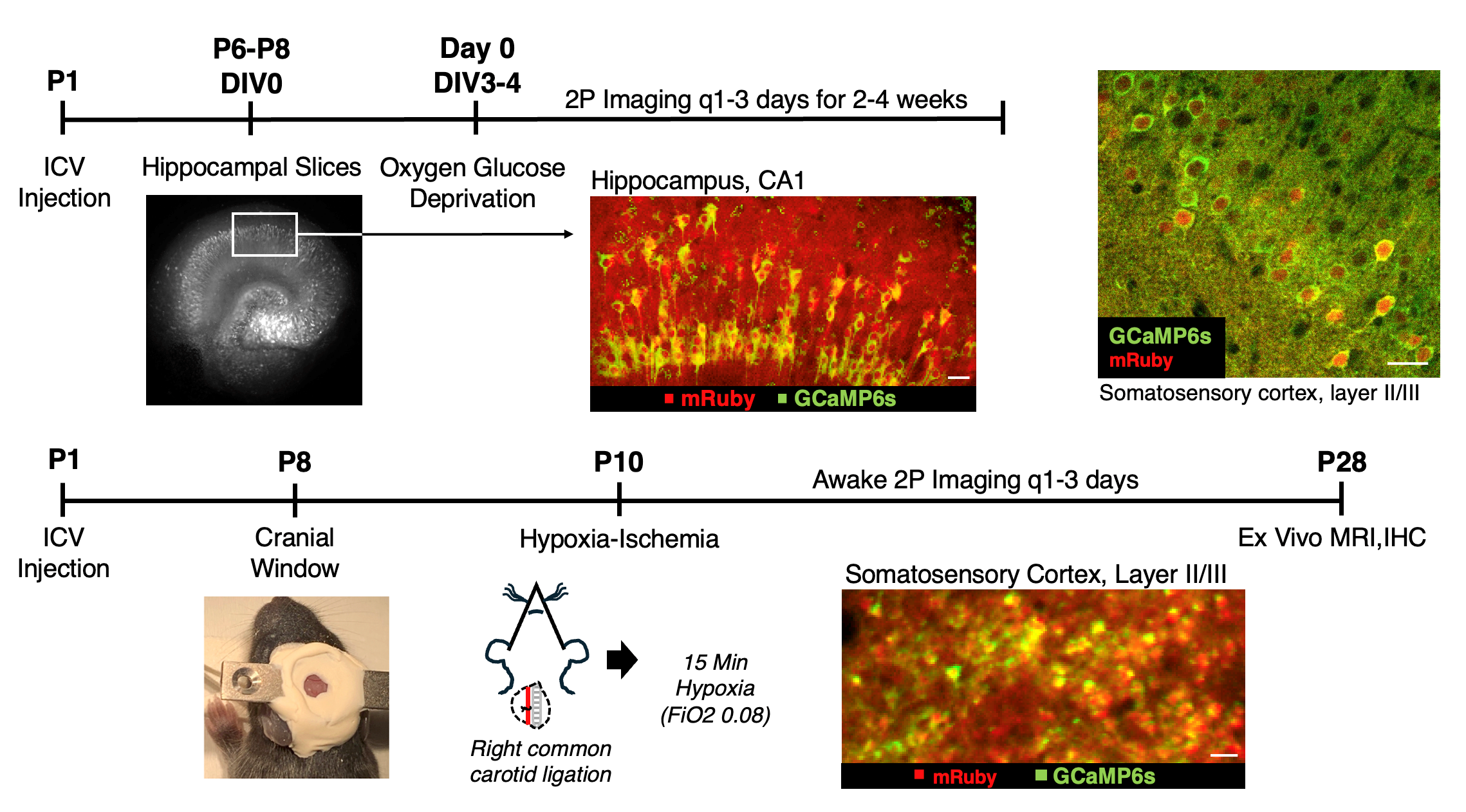You are here
Tracking Real-time Neuronal Function and Viability Longitudinally in a Murine Model of Developmental Brain Injury
Speakers
Abstract
My work has focused on developing novel in vitro and in vivo technologies to image and measure neuronal cell death and activity over weeks with cellular resolution in living tissue in a neonatal rodent model of hypoxic-ischemic injury. Specifically, I have modeled mild hypoxic-ischemic encephalopathy (HIE) as it is common in our neonates in the NICU with 30-40% of patients going on to have adverse outcomes. Progression of injury after mild HIE is poorly understood, and no therapies are currently available. I utilize chronic, awake two-photon cortical imaging of GCaMP6s and mRuby co-expressing neurons. I have found that mild HI causes a late and persistent elevation of cortical and hippocampal neuronal death that accelerates in the second week after injury despite only transient disruption of cortical network activity. For the first time, I show full recovery of cortical network activity by 24 hours after mild HI. Mild HI did not affect maturational cortical network desynchronization or later cortical responses to sensory input. Additionally, mild HI did not result in atrophy on MRI 18 days after injury. Lastly, and critically, the neurons destined to die after mild HI show markers of viability for up to 10 days after injury including robust fluorophore expression and full participation in network activity. In total, the findings suggest an extended therapeutic window for mild HI.

